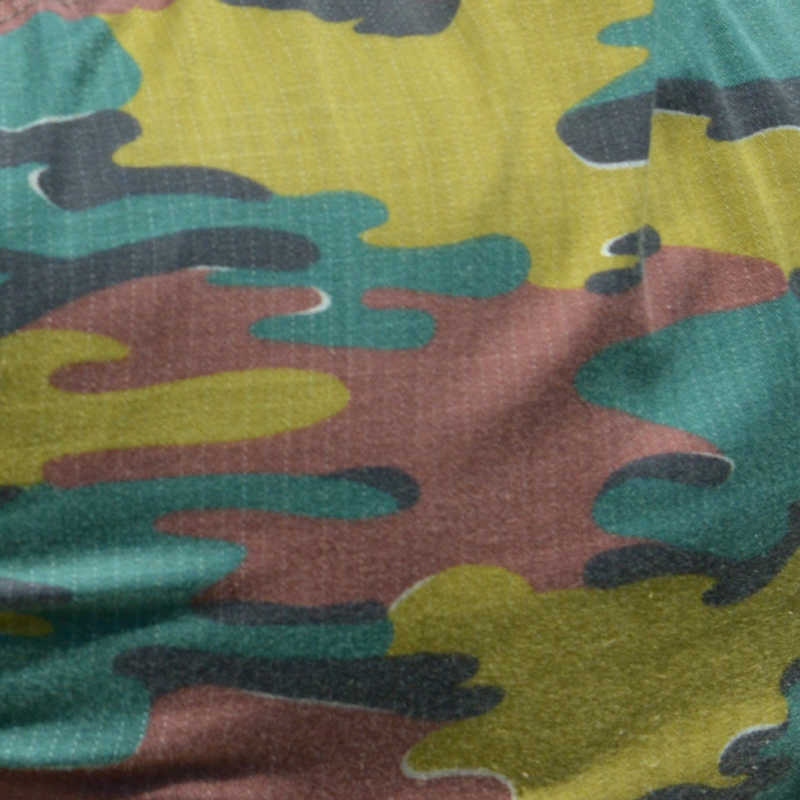
Belgium | Jigsaw
Belgium's jigsaw camouflage pattern, also known as "Belgian Jigsaw" or "Belgian Brushstroke," is a distinctive and unique military camouflage pattern that has been used by the Belgian Armed Forces since the early 1950s. Here is an overview of the history, design, and usage of this camouflage:
History
- 1950s Introduction: The jigsaw camouflage pattern was first introduced in the early 1950s. It was developed as part of the Belgian Army's modernization efforts after World War II.
- Multiple Versions: Over the decades, there have been several variations of the jigsaw pattern, each with slight differences in color and design. The most significant updates were made in the 1960s, 1980s, and 1990s.
Design
- Pattern: The jigsaw camouflage features irregular, interlocking shapes resembling puzzle pieces, hence the name "jigsaw." These shapes create a disruptive pattern that breaks up the outline of the wearer.
- Colors: The color scheme typically includes shades of green, brown, black, and tan. The exact colors have varied with different versions, but the overall palette is designed to blend into the temperate European landscapes.
- Effectiveness: The jigsaw pattern is effective in forested and semi-wooded environments, which are common in Belgium and other parts of Europe. The interlocking shapes help to conceal the wearer by disrupting the outline and blending with natural backgrounds.
Usage
- Military Uniforms: The jigsaw camouflage has been used for various military uniforms, including combat uniforms, field jackets, and other gear.
- International Influence: While primarily used by the Belgian Armed Forces, the jigsaw pattern has also influenced other camouflage designs worldwide and has seen use in various other countries and contexts.
- Current Use: The jigsaw pattern continues to be in use, though modern Belgian military forces have also adopted other camouflage patterns for specific environments and missions.
Notable Features
- Versatility: The jigsaw pattern's design allows it to be effective in multiple environments, particularly in European temperate zones.
- Recognition: It is easily recognizable due to its unique design, which stands out among other military camouflage patterns.
- Legacy: Despite newer patterns and technologies, the Belgian jigsaw camouflage remains an iconic symbol of the Belgian Armed Forces and their historical evolution.
Variants
- Early Variants (1950s-1960s): These had a more limited color palette and simpler designs.
- 1980s Update: Introduced more intricate patterns and additional colors for better effectiveness.
- 1990s and Beyond: Further refinements were made to adapt to new operational requirements and environments, maintaining the pattern’s relevance in modern military contexts.
Belgian Jigsaw Camouflage is a testament to the innovative approach to military uniform design, balancing functionality and aesthetic distinctiveness. It remains an important part of Belgium's military heritage.
This collection is empty
View all products
Sort by

